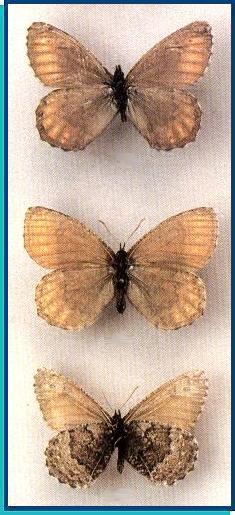LEPIDOPTERA
S A T Y R I D A E Boisduval, 1833
OENEIS Hubner, [1819]
Oeneis norna (Thunberg, 1791)
Oeneis norna (Thunberg, 1791)

· TYPE LOCALITY. Lapland.
· RANGE. Polar tundras of Europe and Asia, montane tundras of Siberia and the Far East.
· DISTRIBUTION AND VARIATION. A highly polymorphous species with a lot of subspecific and infrasubspecific forms described. At present, the following taxa are regarded as subspecies:
ssp. norna (Thunberg, 1791) (= dembowskyi Sedykh, 1974; = falkovitchi Sedykh, 1974; = kusnetzovi Sedykh, 1974; = koslowskyi Sedykh, 1974; = saepestriata Sedykh, 1974; = solopovi Sedykh, 1974) - polar tundras of the European part;
ssp. altaica Elwes, 1899 (= tundra A. Bang-Haas, 1912; = shurmaki Korshunov, 1988) - the Altai and Sayan Mts., Transbaikalia;
ssp. chione Austaut, 1911 (=? rosovi Kurentzov, 1970) - the Far East (coasts of the Sea of Okhotsk), Kamchatka;
ssp. arethusoides Lukhtanov, 1989 - polar tundras of Siberia and the Chukot Region.
The subspecies are distinguished by size, UPF ground colour intensity and the extent of development of bands and eye-spots.
· HABITAT AND BIOLOGY. Shrubby tundras on plains and in the mountains. Flight period: June-July. Host plants in Europe (Henriksen, Kreutzer, 1982): Carex, Nardus, Poa. Larvae hibernating.
· SIMILAR SPECIES. O. bore: male androconia less strongly developed; UPS eye-spots reduced, as a rule.
Photo and text: Guide to the BUTTERFLIES OF RUSSIA and adjacent territories Volume 1. PENSOFT, Sofia - Moscow. 1997